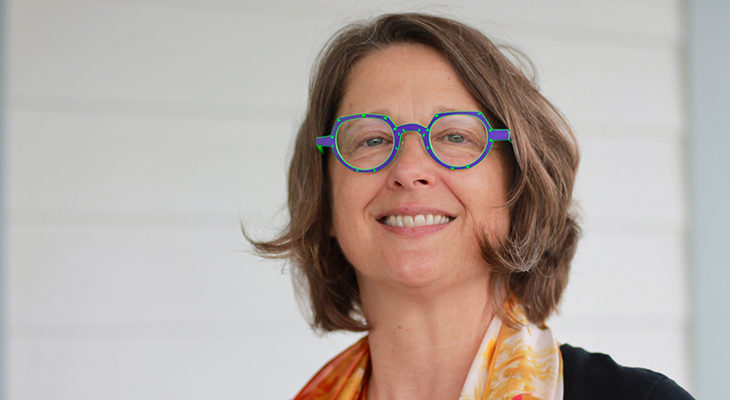
Educational architect Robin Randall’s focus on setting up others for success leads to American Institute of Architects’ highest honor
During meetings and presentations, architect Robin Randall is often seen smiling and nodding while other participants — client representatives, community members, coworkers — share their thoughts. The drive to listen, ignite dialogue, promote client ideas, and uplift novice architects has propelled Randall’s 35-year architectural career.
Randall is not only an architect, researcher, and planner but also a teacher whose lessons have helped college students find their niche, coworkers channel their talents, and school communities embrace architecture’s ability to enhance student performance.
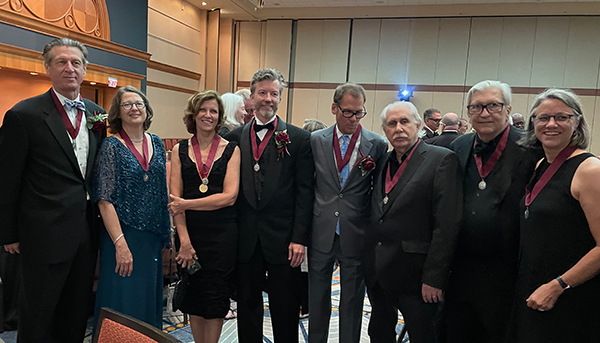
Her portfolio spans hundreds of preK-12 educational projects ranging from minor renovations to districtwide master plans and new schools. What has given her the most fulfillment, however, is watching the next generation of architects emerge, whether that means they coordinate an event, present at a conference, or take the reins of a large project.
The American Institute of Architects (AIA) has recognized Randall’s “notable contributions to the advancement of the profession of architecture” by elevating her to the College of Fellows, a distinction achieved by fewer than three percent of AIA members. Randall is one of only five members of AIA’s Chicago chapter and 88 members of AIA nationwide to achieve the accolade in 2022.
Team Player Origins
Randall grew up between two brothers in the small town of Floyds Knobs, Indiana. The family’s competitive nature led to her own high school sports successes, particularly in volleyball. As a setter for the Floyd Central High School Highlanders, she ran the offense and “set up” the ball for her teammates. Randall believes her experience as a setter paved the way for the role she adopted as an architect.
“You have to know where all the team members are, what their strengths are, and how to get them to work together,” she said of her approach. “You’re not the one going for the score — you’re setting it up. Your reward is seeing it happen and knowing that you helped.”
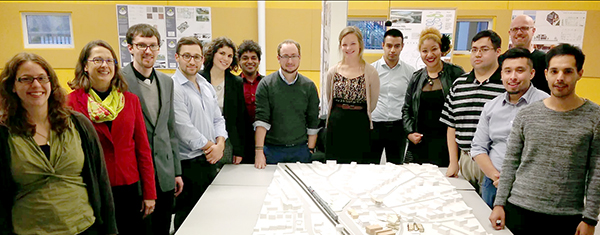
A Level Playing Field: Competition to Collaboration
Early in her educational journey, Randall discovered that the students who thought most like the teacher were considered the “good students.” And those who thought differently often got left behind. Randall set out to transform this culture of competition into one of collaboration, both in schools and in the workplace. Her rallying cry became, “Everyone brings something unique to architecture.”
One of Randall’s first goals as a professor at Judson University was to find out how her students learned best so she could create “a level playing field.” Using a multiple intelligences assessment tool, students pinpointed their strengths and best learning strategies. Randall customized lessons and settings based on their preferences. An outdoor classroom, for instance, appealed to those who favored natural environments. Introverts had a place to digest information by themselves, while extroverts had opportunities to present.
Randall also transformed Judson’s graduate course in architectural research and programming by connecting student teams and real “clients.” She contacted municipal leaders to identify local nonprofit organizations in need of architectural services. These clients joined her students for programming and master planning review sessions.
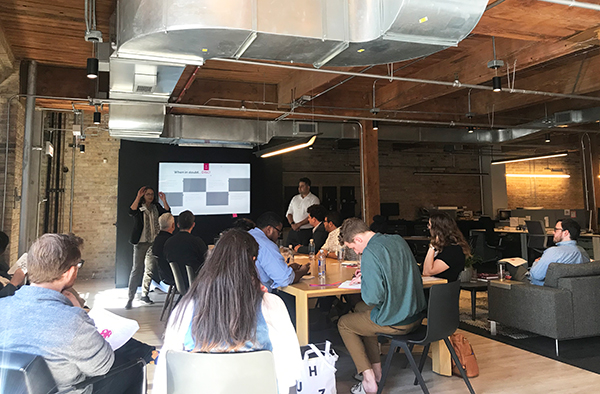
Sussing People’s Strengths: A Friend to Emerging Professionals
For many years, Randall has worked to dispel the mindset among those new to the architectural workforce — AIA calls them “emerging professionals” — that success is based solely on individual achievement. Her teaching experience and her belief that “architecture is a team sport” has fueled her desire to give coworkers (and less experienced designers in general) opportunities for growth.
“Robin’s first instinct is to give emerging professionals support in their skill sets, knowledge base, and experience,” said Loren Johnson, both a coworker and former student in Randall’s graduate research and programming course at Judson. “This instinct has led her to give many EPs opportunities to lead design, run client meetings, and advance in their careers faster than one would typically expect.”
Justin Banda, another coworker who also had Randall as a graduate professor, said she played a key role in his first public speaking engagement, his first community presentation to a school group, and his first solo master plan.
“She has a way of sussing out people’s strengths and putting them in a position to use those strengths,” he said.
Banda, also an associate director at AIA Chicago, is quick to point out that Randall’s induction into the College of Fellows goes far beyond her work at Legat and Judson. She has mentored those new to the profession through programs such as workshops at the AIA Illinois Emerging Professionals Summit.
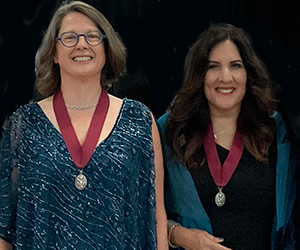
Advancing Women in Architecture
According to the AIA, women account for only 17 percent of registered architects today. When Randall joined the workforce, that number was closer to four percent.
Early in her career, she attended many meetings where she was the only woman in the room. Fortunately, her former Ball State University professor Linda Nelson Keane (now at the School of the Art Institute of Chicago) became a mentor with whom she has maintained a friendship to this day.
“If young women don’t see other women in a position of leadership,” said Randall, “it’s hard for them to see themselves in that position.”
Over the past three decades, Randall has been a source of inspiration for many female emerging professionals. One success story is Vada Kornegay, CEO of JiL Architects & Technologists.
“Since the day I met Robin Randall 15 years ago at the start of my architectural
career, she has been inspiring, encouraging, and impactful,” said Kornegay. “She not only demonstrated excellence, but she also encouraged me to be excellent. Now that I am a leader of my own firm and staff, I can truly appreciate all that she has contributed to this industry and me.”
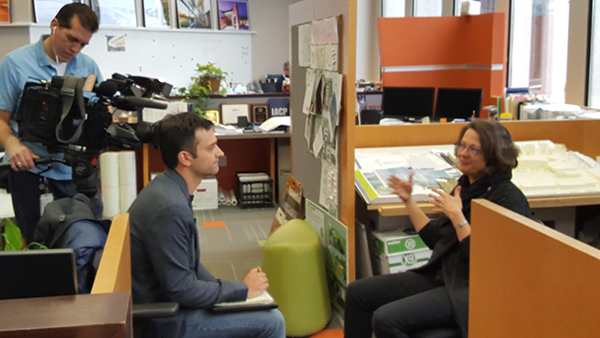
Emerging professional Kelsey Jordan was at an educational design conference held at the world-famous Frank Lloyd Wright-designed Fallingwater home in Pennsylvania. She looked up from the waterfall that flows beneath the iconic home and saw another conference participant: Robin Randall. Jordan told her she knew two people at Legat, so Randall took a selfie of the two of them and sent it to the acquaintances.
The duo ended up taking an hour-long walk in the woods. Their conversation covered everything from the challenges of being a woman in architecture to opportunities in educational design. Before long, Jordan found herself moving from St. Louis to join Randall at Legat’s Oak Brook, Illinois studio. Since then, the pair has worked on projects and presented at conferences together.
“I didn’t think I’d meet someone whose passion for educational design and research matched my own,” said Jordan. “Then I met Robin. Seeing her emerge as a leader in this field has given a huge boost to my own career trajectory.”
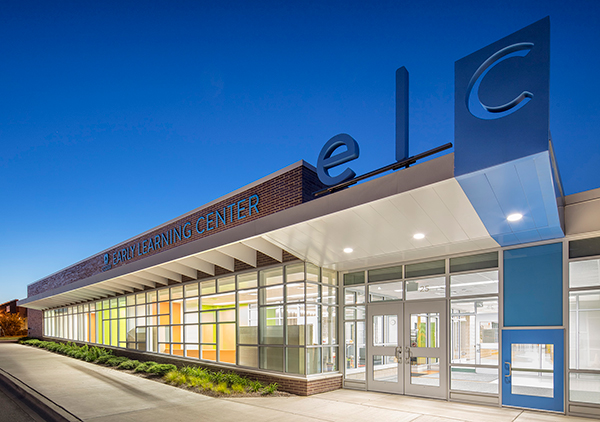
Curiosity Cornerstones: Research, Biophilia, and Community Engagement
A month after the new Community Consolidated School District 59 Early Learning Center opened, Randall got a call from the district’s facilities director. He told her that in their old facility, early learners would cry when their parents dropped them off. With the new Legat-designed center, however, students cried because they had to leave.
That was music to her ears — creating architecture that inspires curiosity and makes learning fun has long been a goal of Randall’s.
Her 1986 architectural thesis at Ball State University was “The Fountain of Youth: How Curiosity and Inquisitive Environments Transform and Energize Inhabitants.” So began a career in educational facility planning and design that now encompasses more than 200 schools, upwards of 50 articles in industry publications, and scores of speaking engagements for local and international audiences.
In 2020, Randall became one of only eight Accredited Learning Environment Planners (ALEP) in Illinois. The credential, certified by the Association for Learning Environments (A4LE), substantiates her mastery of the seven Core Competencies of educational planning and validates her efforts to advance the educational design industry.
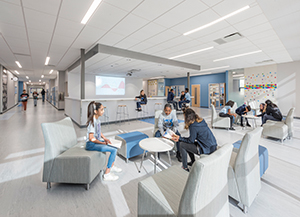
Randall has also been a staunch advocate for incorporating research into the design of educational facilities. Recently, for instance, she enlisted a Northwestern University neuroscience graduate student to conduct pre- and post-occupancy studies for the new Laraway School in Joliet, Illinois. The research revealed that the preK-8 school’s design, which incorporates grade-level neighborhoods, not only enhanced school pride but also reduced bullying.
Another tool Randall has used to campaign for schools that provoke curiosity is biophilia, or the human desire to connect with nature. When she first used the term, she was sometimes met with eye-rolling and comments like, “That sounds like some kind of disease!” Despite the naysayers, she embraced the integration of nature into educational settings.
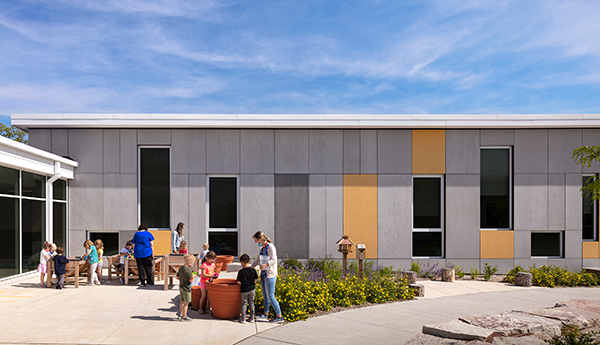
Today, Randall’s portfolio includes dozens of articles and speaking engagements centered around the topic, as well as many schools that unite students and nature. The CCSD 59 Early Learning Center and Jefferson Early Childhood Center, for instance, both feature extensive outdoor courtyards and gardens around which interior spaces were designed.
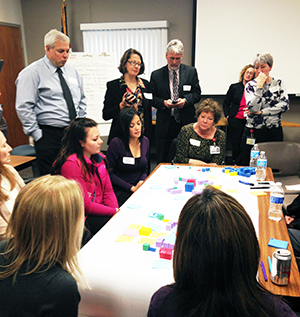
Randall’s design goals would not have come to fruition without her talent for uniting school community members with a clear vision of what their facilities could become. Her ability to draw out and act upon the opinions of parents, students, teachers, and administrators has led to the passage of major referendums and built school pride.
“Robin’s expertise in engaging and motivating our community is exemplified in the increasing numbers attending the Columbus City Schools Facility Master Planning community engagement sessions,” said T. Alex Trevino, director of the office of capital improvements at Columbus City Schools. “Robin has a gift of connecting with everyone from students to educators to anxious community members. Her calm demeanor and expert supportive style as a leader permeated even through our original Zoom sessions during COVID-19. Her impact will be felt for future generations.”
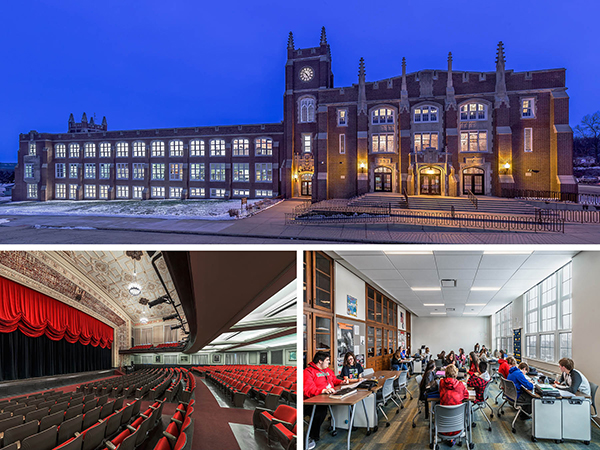
Randall’s community engagement efforts with LaSalle-Peru Township High School District 120 led to a successful $38 million referendum that renews the facility while respecting the community’s reverence for the building’s 100-year history. Her programming work with A.E.R.O. Special Education Cooperative stakeholders resulted in the new A.E.R.O. Therapeutic Center now under construction. Research into cognitive/physical disabilities and behavior/emotional diversities drove the design.
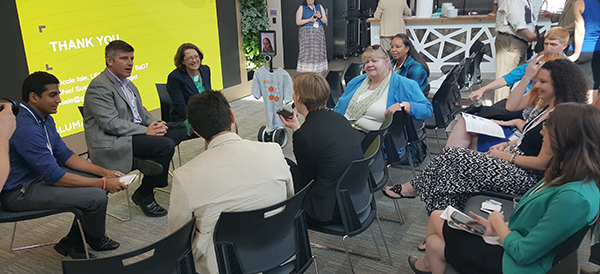
Good People, Good Work
When COVID-19 struck educational providers most severely, Randall devised the EDEngage sessions. These virtual gatherings explored everything from the challenges of reopening schools to the psychological impact of the pandemic on students, parents, and teachers. What began as a meeting with four Midwestern school superintendents evolved into a forum that assembled experts from nine different countries. Contributors ranged from superintendents and facilities professionals to furniture designers and psychologists.
The EDEngage sessions exemplify one of Randall’s greatest strengths: the ability to bring together and spark dialogue among educational and architectural communities. She also initiated Legat’s annual Think Tank event. The first gathering in 2013 was an internal workshop about educational planning principles. The event progressed to become an international symposium that welcomes members of the architecture, engineering, and construction industry, as well as policymakers, educators, students, and even community members. Among the topics addressed in Think Tank conferences were sustainable design, health and welfare, school safety, and urban sprawl.
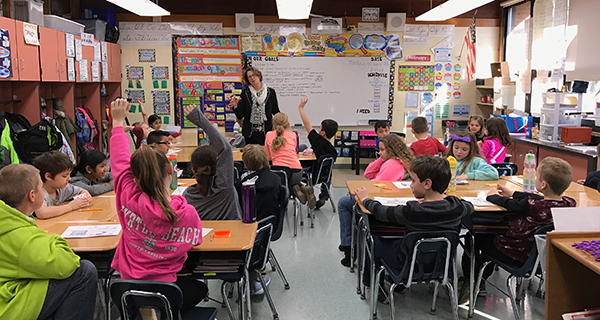
Randall’s willingness to embrace those who think differently, along with her belief that every person has something of value to contribute, has not only enabled these connections but also made her a resource for architects and educators alike.
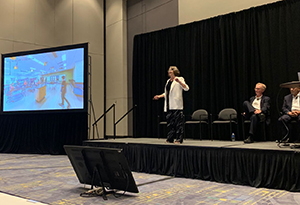
“Robin is without question among the nation’s finest K-12 thought leaders, a true visionary and creative architectural master,” said Mike Maloney, retired director of operations at Davenport Community Schools. “Robin’s technical skills as a designer and architect are exceeded by her ability to engage the client, build a shared vision, and then work through the process of planning, of stakeholder engagement, project approval, design, preparing quality construction documents, construction administration, and closeout.”
Randall, who celebrates 10 years with Legat next fall, attributes much of her recent successes to her coworkers. “They’re some of the best architects I’ve ever worked with,” she said. “Kind, good listeners, detail oriented, and they genuinely care about our clients. It is a true pleasure to support our teams, and I can’t do my job without everyone else doing their jobs so well. I’m grateful for the hard work that everyone puts in.”
Though Robin Randall has navigated the complexities of relationships and projects throughout her career, she believes it all comes down to one simple mission: “Good people doing good work for good people. Repeat.”
Contact us or comment below to share your experiences with Robin.


